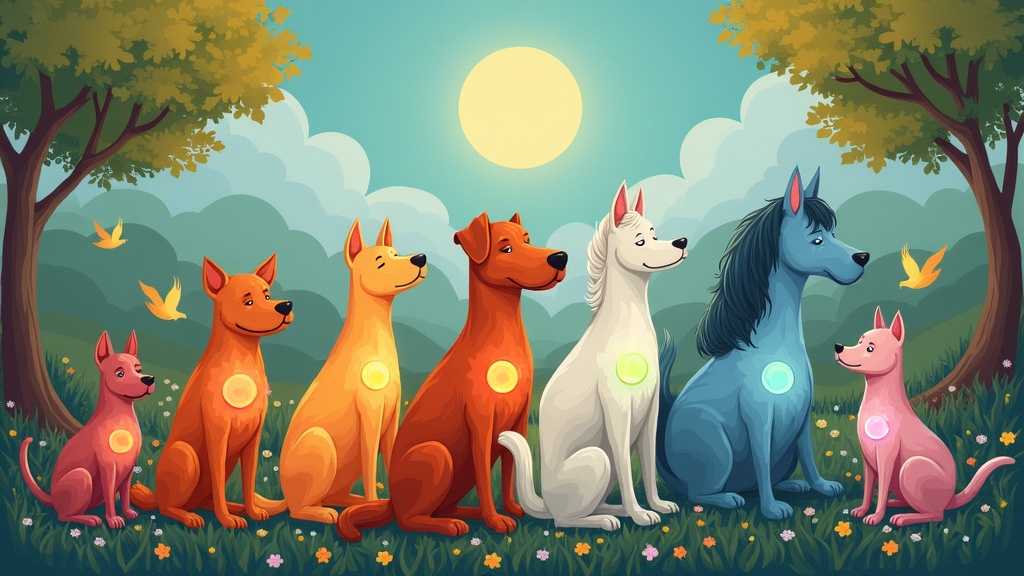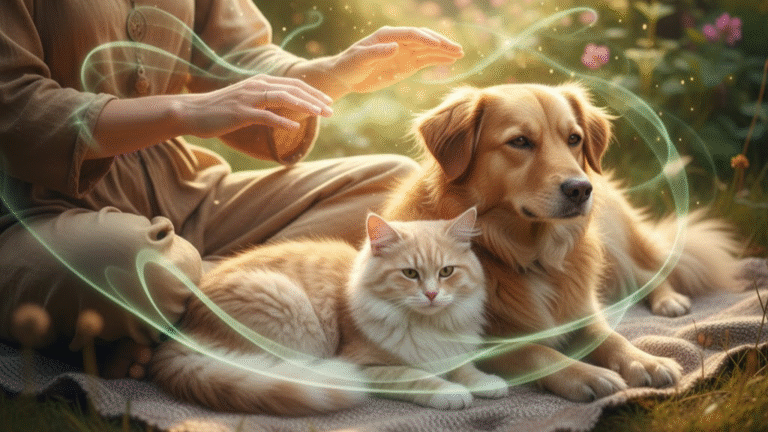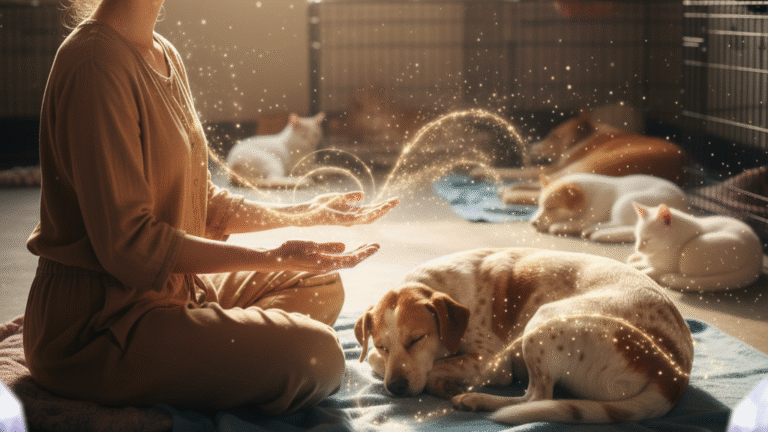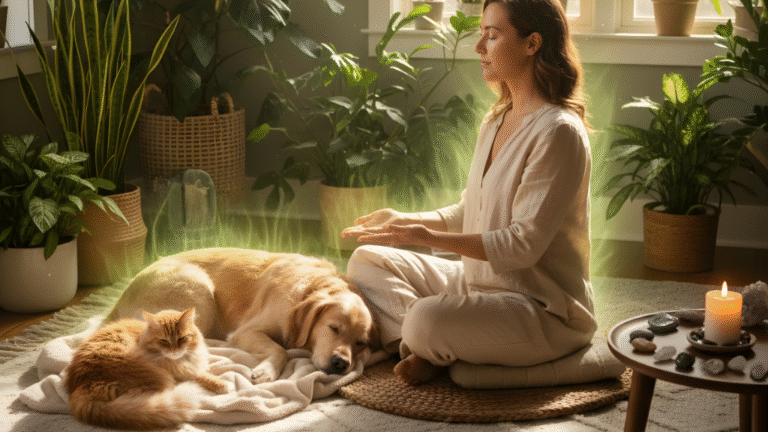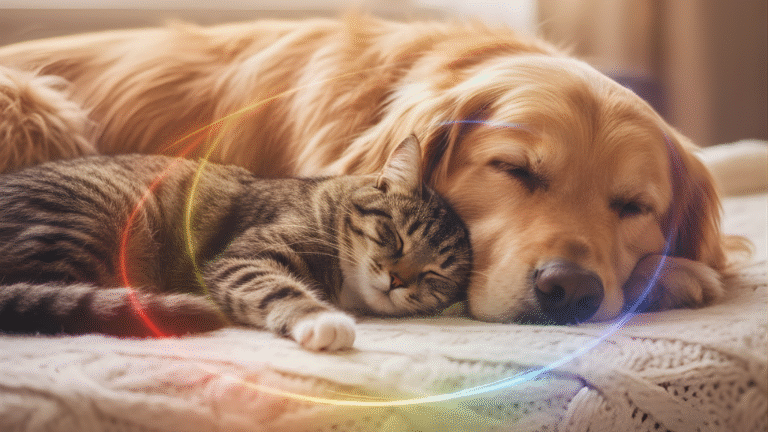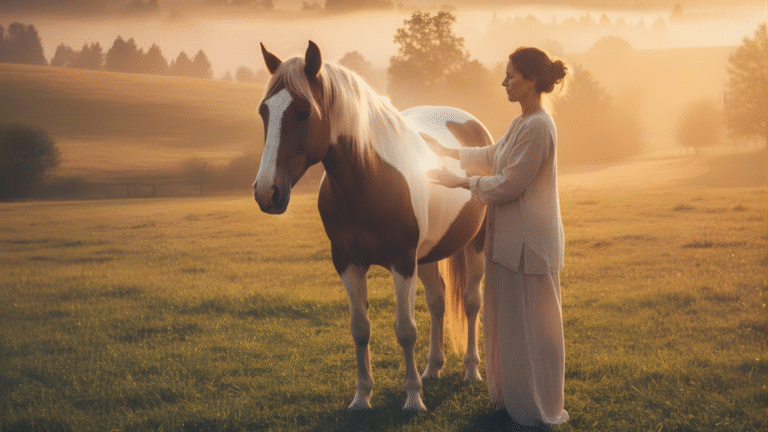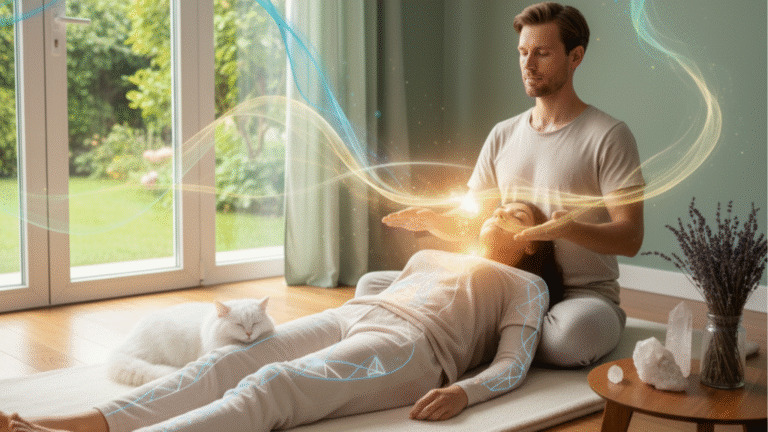Step-by-Step Guide To Chakras In Animals
Many people hear the word “chakra” and instantly think of humans. But animals also have chakras. These energy centers influence their health, mood, and even their connection with us.
If you're curious about helping your pet or any animal achieve better balance and well-being, learning about chakras in animals is a practical place to start.
Here’s my guide to understanding and working with animal chakras, step by step.
Did you know that many pet parents combine their love for animals and Reiki into thriving blogs and businesses? 🐾 Discover how inside Wealthy Affiliate.
What Are Chakras in Animals?
Chakras are energy centers that exist in subtle energy bodies, according to many holistic and spiritual traditions.
While the idea of chakras originally comes from ancient Indian philosophy, the belief in animals having chakras has become quite popular among holistic veterinarians, animal Reiki practitioners, and pet owners interested in energy healing.
Like humans, animals are believed to have seven main chakras that run along the body, each linked to specific physical and emotional functions.
The idea is that balanced chakras help animals feel happier, healthier, and less stressed, while blocked chakras might show up as behavioral or health issues.
While there are some differences in how chakras are described for different animal species, the basic locations and meanings are usually pretty similar.
Understanding how these energy centers work is the first step to helping your animal friends feel their best.
Why Understanding Animal Chakras Matters
For anyone who cares deeply about their pets or works with animals, such as trainers, animal communicators, or people doing rescue work, learning about chakras can offer new tools for understanding and caring for animals.
Not all issues can be solved with a trip to the vet or by switching up food and exercise. Sometimes, animals need energetic support to resolve lingering problems like anxiety or aggression, or to bounce back from trauma or illness.
I’ve seen plenty of people notice positive changes in their animals after chakra balancing sessions.
Even just tuning in to an animal’s energetic body can help deepen your bond, spot issues earlier, and give a boost to their emotional and physical health.
As always, this isn’t a substitute for regular vet care, but adds another layer to all-in-one well-being.
Digging a little deeper into animal chakras helps you relate to your pets in ways you may never have expected.
Many holistic animal practitioners find that learning about chakras leads to a more sensitive, respectful, and trusting partnership with animals.
You'll better notice their needs and can offer support that matches their unique energy and personality.
Mapping the Seven Main Chakras in Animals
Each chakra in an animal’s body has its own vibe, colour, and general influence. Here’s a quick rundown on the classic seven:
1. Root Chakra (Base of Spine/Tail)
Linked to grounding, physical safety, and survival instincts. Often out of balance in fearful or skittish animals.
2. Sacral Chakra (Lower Belly)
Tied to emotions, playfulness, and creativity. In balance, it brings easy socializing; out of balance, you might see emotional outbursts or shyness.
3. Solar Plexus Chakra (Stomach Area)
Associated with confidence, willpower, and self-esteem. This one is important for animals that tend to be pushy or, on the flip side, extremely timid.
4. Heart Chakra (Center of Chest)
All about love, compassion, and connection with humans or fellow animals. An animal with blockages here could be withdrawn or overly needy.
5. Throat Chakra (Throat)
Governs communication and the ability to express needs. Watch for animals with unexplained coughing or trouble vocalizing.
6. Third Eye Chakra (Forehead, between eyes)
Linked to intuition, sensitivity, and mental focus. Animals with a strong third eye chakra often have keen senses and seem especially aware of their surroundings.
7. Crown Chakra (Top of Head)
Represents a sense of peace, spiritual connection, and overall harmony. Signs of imbalance might include confusion, disconnection, or restlessness.
The placement remains generally consistent across dogs, cats, horses, and other mammals, though there are species-specific variations for birds, reptiles, and exotics.
The understanding of chakras in animals continues to grow fast, with research and anecdotal evidence showing that energy balancing can support everything from emotional stability to recovery after illness.
Learning where chakras are located and what they control puts pet owners in a great spot for tracking down imbalances and helping their animals in meaningful ways.
Getting Started With Animal Chakra Balancing
Before you try any chakra balancing techniques, spend some time observing your animal. Watch for behaviour changes, shifts in mood, or signs of physical discomfort.
This isn’t about diagnosing anything; it’s simply about paying extra attention to your pet’s energy and demeanor.
For beginners, keeping things simple is perfectly okay. You don’t need special tools, just some patience and a calm attitude. Here’s how I usually prepare:
- Create a peaceful environment with as few distractions as possible.
- Let your animal approach you on their own terms.
- Keep sessions short; most animals can only handle a few minutes at first.
- Respect whether your animal wants hands-on contact, wants to sit next to you, or prefers some space.
Step By Step Animal Chakra Balancing Guide
1. Root Chakra
Place your hands (or hover them close if your animal isn't comfortable with touch) just above the base of the spine or at the tail.
Focus on stability, warmth, and reassurance. Visualize red light or imagine a sense of groundedness passing from your hand to the animal.
2. Sacral Chakra
Move your hands to the lower belly area, just below the belly button. Imagine a gentle orange glow. Offer comfort and playfulness, and encourage any positive interaction, even a little tail wiggle counts as a good sign.
3. Solar Plexus Chakra
Gently hover your hands over the stomach area. Visualize a yellow light spreading warmth, confidence, and gentleness. Sometimes you’ll notice animals breathe more deeply or sigh here.
4. Heart Chakra
Place your palm just above the chest, in the center. Imagine green or pink light and feelings of love and acceptance. Some animals will nuzzle into your hand, while others may simply relax their body.
5. Throat Chakra
Bring your hand close to the throat. Visualize a blue light and encourage gentle, honest communication; even a single meow, bark, or whinny is good.
6. Third Eye Chakra
Hover your hand between the eyes, focusing on a deep indigo or violet glow. This supports clarity and intuition. A relaxed stare or softening of the eyes usually means your animal is at ease here.
7. Crown Chakra
Bring your hand to the top of the head without pressing down. Imagine a white or purplish light. Support a sense of lightness, calm, and spiritual connection. Some animals become super peaceful at this step.
There’s no need to hold each position for more than a few minutes. Pay attention to your animal’s signals.
If they seem restless, give them a break and try again later. Consistency helps, so regular short sessions usually bring better results than one long one.
Cool Tools and Techniques to Support Chakra Health
Besides direct energy work, plenty of folks (myself included) use supportive tools for balancing animal chakras. Here are a few you might want to try:
- Colour Therapy: Using coloured blankets, collars, or toys that match specific chakras can offer subtle support.
- Crystals: Stones like amethyst, rose quartz, or tiger’s eye can be placed near where your animal rests, but be sure to keep them out of reach if your pet is a chewer.
- Essential Oils: Gentle, pet-safe oils like lavender or chamomile used in a diffuser (never directly on your animal) can help set a peaceful mood.
- Calming Music or Sound Therapy: Soothing frequencies or soft music often helps animals relax during a session.
- Animal Reiki: Specific energy healing methods for animals work really well for those who want a bit more structure.
Just remember to monitor how your animal reacts to any of these; comfort and well-being are always the top priorities.
Some people have found that combining multiple tools can really give a boost to the experience.
For instance, using a soothing music track along with a blue blanket while holding a blue stone can help a nervous pet during a throat chakra balancing.
The key is to be mindful, adapt to what your pet enjoys, and always watch their comfort and behavior closely.
Common Questions About Animal Chakras
People often have concerns or mixed feelings about using chakra balancing on their pets. Here are a few of the top questions I hear:
Question: Can I do chakra work for any type of animal?
Answer: Chakra work is suitable for almost any animal, including dogs, cats, horses, rabbits, and birds.
What matters most is how the animal responds; some love the attention and become extra mellow, while others might only tolerate a few moments before wanting to move away. Reading your animal’s comfort level is really important.
Question: What signs show that an animal’s chakras might be out of balance?
Answer: Look for physical symptoms (like skin issues, tummy troubles, or fatigue) combined with behaviour changes, such as excessive barking, hiding, clinginess, aggression, or fearfulness.
Always rule out medical causes first with a qualified vet. Chakra work is most helpful as a complementary support, not a replacement for proper care.
Question: How often should I work on my animal’s chakras?
Answer: Some animals benefit from brief sessions a few times a week, while others only need it occasionally. Watch your animal’s behavior and energy levels to guide you.
Regular sessions can be especially helpful for rescue animals, those recovering from illness, or pets in stressful environments.
Question: Is chakra balancing the same as animal Reiki or massage?
Answer: These methods can overlap, but they're not identical. Animal Reiki is a structured form of energy work with its roots in Japanese healing, while chakra balancing can be much more flexible and adapted to your animal’s unique energy needs.
Neither method should replace veterinary care, but each can bring extra comfort and support to animals who need it.
Real World Examples of Chakra Balancing for Animals
In my own work and among friends in the animal care field, I’ve seen plenty of real-life benefits when people start paying attention to animal chakras.
For example, I had a foster dog who was anxious and would hide from visitors. Focusing on his root and heart chakras during short, gentle sessions helped him relax and gradually become more social.
Another friend uses third eye and throat chakra balancing with her highly sensitive horse during trailer loading, noticing the horse stays calmer and more focused through the process.
These aren’t miracle fixes, but they add meaningful support to any animal’s care routine, and the positive shifts, like better sleep, improved mood, or deeper trust, are well worth the effort.
Many animal caregivers also share stories of shelter pets growing fast in confidence after just a few weeks of gentle energy work, even noticing brighter eyes and more relaxed body language.
Extra Tips for a Safe and Positive Experience
- Never force an animal to participate; always let them come to you.
- Keep sessions short, relaxed, and free of expectations.
- Work in a setting where your animal already feels safe.
- Combine chakra work with other kinds of positive bonding: extra snuggles, walks, or playtime.
- Stay open-minded. Some animals respond right away, others take more time. Either way, your care and attention make a real difference.
Adding chakra balancing into an animal’s care routine can bring nice boosts to their emotional and physical health, and can add a new layer of connection between you and your animal friends.
As always, trust your intuition (and your pet’s reactions), and remember, your calm, gentle presence is the best healing tool you have.
Conclusion
Wrapping up, digging into animal chakras opens the door to a more attentive, nurturing, and deep relationship with your pets.
Even short, regular energy sessions can bring relaxation, a sense of peace, and better behaviour.
Be patient with yourself and your animal friends, and enjoy exploring this next-level cool way to connect and care.
I trust you enjoyed this article on Step-by-Step Guide To Chakras In Animals. Please stay tuned for more Reiki insights, pet wellness tips, and holistic lifestyle ideas.
Take care!
— JeannetteZ
💬 Your Opinion Is Important To Me
Do you have thoughts, ideas, or questions? I’d love to hear from you. Please leave your comments below or email me directly at Jeannette@pawreiki.com.
🐾 More PawReiki Reads
💜 My #1 Recommendation for Online Success
Reiki has been life-changing for me, and I love sharing it online. If you’ve wondered how Reiki lovers turn their passion into income, this platform is the best place to start.
🌟 See How Reiki Lovers Build Online Income — Try WA FreeDisclosure
This post may contain affiliate links. I earn from qualifying purchases at no extra cost to you. Please read my full disclosure.

